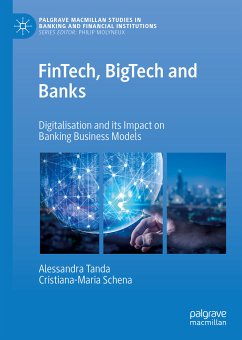The unbundling and re-bundling of productive processes in finance, the treatment of information and the level of innovation in the customer relationship highlight the intense change that the banking activities of new financial services providers are currently dealing with, especially the retailsegment. Despite the main international banks' implementation of innovative strategical approaches to take advantage of the digitalization of business and cope with competition, so far the level of the disruption brought by FinTech is not fully understood or widespread. This holds especially true for the smaller banks: the latter need to take a proactive approach to individuate a business model able to satisfy the new customer needs and the competitive pressure that are destined to increase and further evolve. This book addresses this and would appeal to academics, researchers and students of banking, FinTech and financial innovation alongside policy makers, regulatory authorities, FinTechs and banks.
Dieser Download kann aus rechtlichen Gründen nur mit Rechnungsadresse in A, B, BG, CY, CZ, D, DK, EW, E, FIN, F, GR, HR, H, IRL, I, LT, L, LR, M, NL, PL, P, R, S, SLO, SK ausgeliefert werden.









